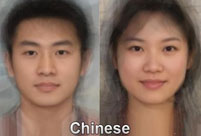 Top 100 beauties in the world!
Top 100 beauties in the world!
 Gallery: Who is the most beautiful one?
Gallery: Who is the most beautiful one?
 If you like autumn, put your hands in the air!
If you like autumn, put your hands in the air!
 Fan Bingbing's "Queen style" in new play
Fan Bingbing's "Queen style" in new play
 Lingerie show at 2014 Miss China
Lingerie show at 2014 Miss China
 J-10 fighters show aerobatic stunts in smog-free sky
J-10 fighters show aerobatic stunts in smog-free sky
 Charming contestants of Shanghai Int’l Model Contest
Charming contestants of Shanghai Int’l Model Contest
 Most amazing chi-pao beauties
Most amazing chi-pao beauties
 7 deadly animal attacks
Russia to launch 70 Proton rockets by 2020: official
7 deadly animal attacks
Russia to launch 70 Proton rockets by 2020: officialSHIJIAZHUANG, Nov. 21 -- Archaeologists have unearthed new paleolithic remains that may be 500,000 years old in north China's Hebei Province, which indicated the hominids of Northeast Asia lived in a wider habitat than previously thought.
The remains were excavated some 150 km away from the Nihewan Basin site where mammal fossils and Old Stone Age remnants known as the Nihewan Culture ruins were first discovered in the 1920s. They widen the geographic scope of relevant research, archaeologists said.
Xie Fei, head of Nihewan Archaeological Institute of Hebei Normal University, said the core research area of the Nihewan Culture ruins remained in the Nihewan Basin in Yangyuan County of Zhangjiakou City, where Chinese and foreign archaeologists had conducted in-depth studies since 1920s.
Future research should be broadened to the new excavation site in Huailai County, Xie told Xinhua on Friday. He said a grand Nihewan Culture region is being etched out, which also includes Datong County in Shanxi, Yanqing County in Beijing, Zhuolu and Yuxian County in Zhangjiakou.
Li Dingyuan, curator of Huailai County Museum, also agreed that Huailai was an important piece Nihewan ruins.
The 500 new relics include stone tools and animal fossils. They bear striking features of the Nihewan Culture ruins, said Li.
He noted that the findings also dated the history of hominids in Huailai County back hundreds of thousands years to the Middle Pleistocene.
According to Xie Fei who's been participating at the excavation since August, the unearthed stoneware are mainly tools used to crush and cut animals used by hominids during hunting, while the animal skeleton fossils were believed to be food remains.
Archaeologists including Xie believe the Nihewan region is the cradle of "oriental mankind" or hominids of northeast Asia, but it is still controversial whether mankind originated there or migrated there from elsewhere.
 Female soldiers
Female soldiers Hot girls at motor show
Hot girls at motor show  Official trailer of Y-20
Official trailer of Y-20 Photos: Xi Jinping in Fujian
Photos: Xi Jinping in Fujian Standard faces for each countries
Standard faces for each countries China-made military transport aircraft gets ready
China-made military transport aircraft gets ready World Pole Dance Championship in China
World Pole Dance Championship in China Shocking! Photos of Chinese fighters revealed
Shocking! Photos of Chinese fighters revealed 59-year-old Liu Xiaoqing still looks stunning
59-year-old Liu Xiaoqing still looks stunning  Top 10 most dangerous jobs in the world
Top 10 most dangerous jobs in the world  Top 10 fifth generation jet fighters in the world
Top 10 fifth generation jet fighters in the world Top 10 Chinese goddesses
Top 10 Chinese goddesses  Top 20 hottest women in the world in 2014
Top 20 hottest women in the world in 2014 Top 10 pure beauties in showbiz
Top 10 pure beauties in showbiz  Top 10 world's highest-paid models 2014
Top 10 world's highest-paid models 2014 The most gorgeous Chinese women
The most gorgeous Chinese women Top 10 most handsome faces in Asia
Top 10 most handsome faces in AsiaDay|Week|Month